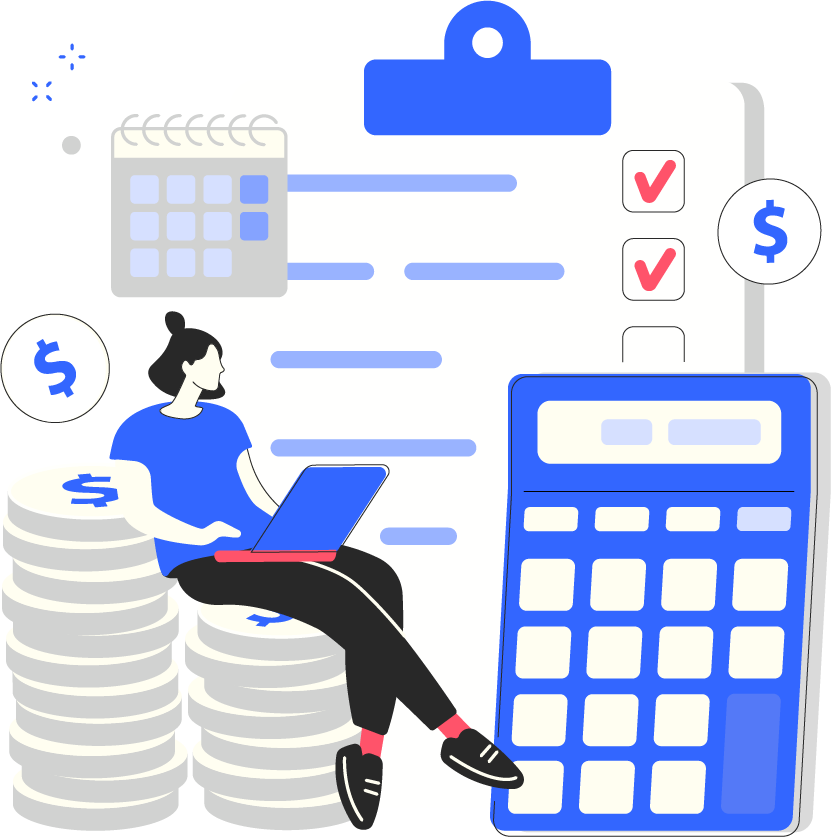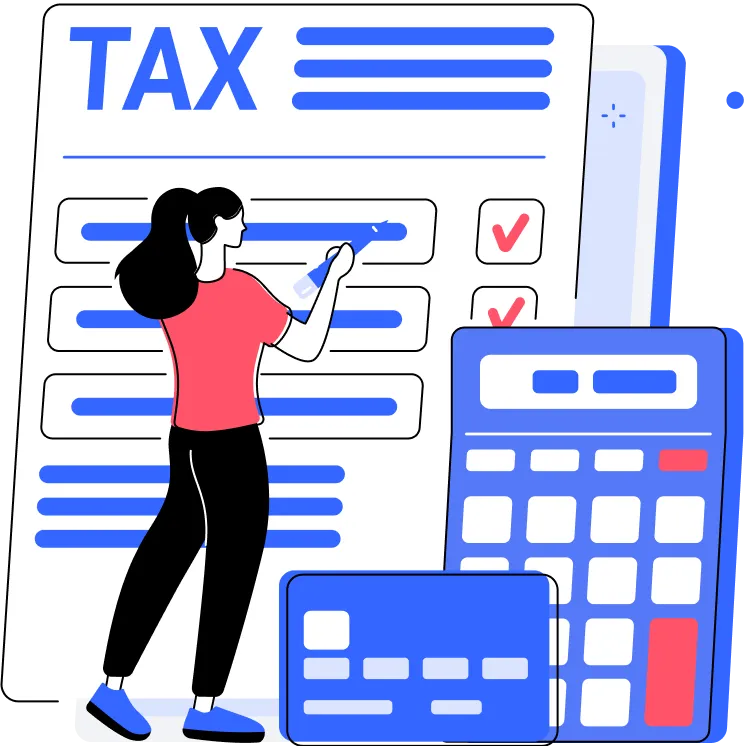Introduction
This provides comprehensive and valuable information on real estate and mortgages in Canada. We discuss various mortgage types, interest rates, down payments, and home-buying processes. Our goal is a reliable and credible foundation for further learning and exploration.

Basics of mortgages in Canada
Types of mortgages in Canada
| Mortgage type | Description |
|---|---|
| Fixed-rate | These mortgages have a fixed interest rate for the entire loan term, providing stability and predictability in monthly payments |
| Variable rate | The interest rate on these mortgages can change over time based on a specific benchmark or reference rate, such as the Canadian prime rate |
| Hybrid | These mortgages offer an initial fixed interest rate period followed by a variable rate period |
Mortgage terms and amortization periods
An amortization period is the total time to pay off a mortgage. Canada's most common amortization period is 25 years, with others ranging from 5 to 30 years.
Mortgage pre-approval process in Canada

Importance of mortgage pre-approval
It clearly shows how much you can afford, allowing you to focus on homes within your budget.
It demonstrates your financial position to sellers, making you a more attractive buyer.
It locks in an interest rate for a specific period, protecting you from potential rate increases while you search for a home.
Steps to get pre-approved for a mortgage
- Check your credit: Review your credit report for errors. Ensure your credit score aligns with your lender’s requirements.
- Gather documents: Compile all necessary documents to verify your employment and financial situation (WOWA et al., 2022).
- Meet with a broker or lender: Discuss your financial situation and submit your mortgage application and the required documents (Richards Mortgage Group, 2023).
- Prepare your deposit (if required) and down payment: Nearly all mortgages require a down payment of at least 5%. The preferred down payment is 20%, allowing you to negotiate the best mortgage interest rate and terms while avoiding costly insurance requirements (outlined below).
Documents required for pre-approval
- Photo identification (e.g., Canadian driver's license, passport, Permanent Residency card, health card).
- Proof of employment and income, such as a job letter, pay stubs, T4 tax forms, or T1 General Tax Return.
- Bank statements showing your net worth and liabilities. Some mortgage brokers will ask you to prepare a Personal Financial Statement (PFS) outlining all your assets, liabilities, and monthly expenses.
- Credit report. Your mortgage broker will likely pull your Equifax® and TransUnion® reports.

Understanding mortgage rates in Canada
Factors affecting mortgage rates
- Economics: Unemployment, inflation, and consumer confidence.
- Government bond yields: Fixed mortgage rates are primarily driven by Canadian bond yields.
- BOC’s key interest rate: The central bank's overnight interest rate sets the tone for banks' prime rates. The prime rate is significant to variable rate holders.
Comparing mortgage rates
- Use comparison tools: Websites like nesto allow you to compare mortgage rates from multiple lenders.
- Consult with a broker: Mortgage brokers can help you find the best mortgage rates based on your financial situation and preferences.
- Negotiate with lenders: Do not hesitate to negotiate to secure a better mortgage rate.
Comparing mortgage rates
- Banks' lending rates typically increase when the Bank of Canada raises its key interest rate. This increase makes borrowing more expensive.
- Higher interest rates discourage borrowing, including mortgages, car loans, lines of credit, and business loans.
- Decreased borrowing generally leads to lower demand for housing and goods and services, ultimately impacting mortgage rates.
Mortgage insurance in Canada

Canada Mortgage and Housing Corporation (CMHC)
Types of mortgage insurance
- Mortgage default insurance: An insurance that protects lenders in case a borrower defaults on their mortgage payments. It is mandatory in Canada when a homebuyer's down payment is less than 20% of the property's purchase price.
- Mortgage protection insurance: An optional insurance that protects borrowers by helping them make mortgage payments or pay off the remaining mortgage balance in case of job loss, injury, disability, critical illness, or death.
When is mortgage insurance required?
Mortgage default insurance providers in Canada include Sagen (formerly Genworth Canada), Canada Guaranty, and the CMHC.
Mortgage protection insurance is not mandatory in Canada. However, it is recommended for homebuyers who want to protect their financial well-being in unforeseen circumstances.

First-time home buyer incentives and programs in Canada
First-Time Home Buyer Incentive (FTHBI)
Home Buyers' Plan (HBP)
Land transfer tax rebates
Provincial and territorial incentives
Tax-Free First Home Savings Account (FHSA) in Canada

The FHSA is available at various financial institutions that offer TFSAs and RRSPs, such as banks, credit unions, life insurance companies, and Canadian trust companies.
Tips for choosing the right mortgage lender in Canada
Comparing banks, credit unions, and mortgage brokers
| Lender type | Description |
|---|---|
| Banks | Large financial institutions offering a wide range of mortgage products and services |
| Credit unions | Member-owned financial cooperatives that often provide competitive mortgage rates and personalized service |
| Mortgage brokers | Independent professionals who work with multiple lenders to find the best mortgage rates and terms for your needs |
Questions to ask potential lenders
What are the lender's fees?
What is the lender's prepayment policy?
How long does the mortgage approval process take?
Can the lender provide references from past clients?
Does the lender provide any additional services or support?
Evaluating lender reputations
- Research online reviews and testimonials. Past clients’ comments can help you gauge a lender's reputation and overall satisfaction.
- Consult with friends, family, or colleagues who have recently obtained a mortgage to gather recommendations and insights.
- Check with the Better Business Bureau or other consumer protection agencies for any complaints or issues related to the lender.

Home buying process in Canada
Selecting a real estate agent
- Research local realtors and choose an agent familiar with your buying area.
- Interview several candidates to find a match (Bico, 2022).
- Look for agents with a strong reputation and positive client testimonials.
Searching for properties
- Online real estate websites like REALTOR.ca, Zillow Canada, and Realtor.com.
- Local real estate listings in newspapers and magazines.
- Recommendations from friends, family, or colleagues.
There are an endless number of real estate listing platforms available to Canadians. A simple Google search of “buy a home in [insert your location here]” will provide you with a full range of results.
Making an offer and negotiating
- Your legal name, the seller's name, and the property's address.
- The amount you are offering to pay (the purchase price) and your deposit amount.
- Any extra items you want to be included in the purchase (e.g., window coverings).
- The date you want to take possession ("closing day").
- A request for a current land survey.
- Any other conditions that must be met before the contract is finalized (e.g., a satisfactory home inspection).
Negotiating is a crucial part of the home-buying process. Be prepared to negotiate and strategize to achieve the best outcomes possible.
Making an offer and negotiating
Legal aspects of buying real estate in Canada

Real estate contract essentials
- Parties: The names of the buyer and seller.
- Property: A clear description of the property being sold.
- Price: The agreed-upon purchase price.
- Completion date: The date when the transaction will be finalized.
- Financing: Details of any financing arrangements, such as a mortgage.
- Home inspection: Any requirements for a home inspection.
- Fixtures and appliances: A list of fixtures and appliances included in the sale.
- Closing costs: Any costs associated with the transaction, such as legal fees and taxes.
Role of real estate lawyers in transactions
- Reviewing the Agreement of Purchase and all other legal documents.
- Ensuring there are no claims or liens against the property.
- Arranging for Title Insurance.
- Facilitating the transfer of ownership and recording the transaction.
Property taxes and other closing costs
Closing costs are one-time fees that buyers must pay when purchasing a property in Canada. These costs include legal and administrative fees, ranging from 1.5% to 4% of the home's purchase price.
Recent changes to Canadian law regarding property ownership by foreigners
Frequently Asked Questions About Canadian Real Estate
What are the different types of mortgages in Canada?
There are three main types of mortgages: fixed-rate, variable-rate, and hybrid mortgages.
Do I need a real estate agent to buy property in Canada?
While not mandatory, a real estate agent can represent your best interests, help you avoid common mistakes, and guide you through the home-buying process.
What are the essential terms of a real estate contract?
A real estate contract must include parties, property description, price, completion date, financing details, home inspection requirements, fixtures and appliances, and closing costs.
What is the role of real estate lawyers in transactions?
Real estate lawyers ensure that all legal aspects are covered, review the Agreement of Purchase, ensure no claims or liens against the property, arrange for Title Insurance, and facilitate the transfer of ownership.
Are there any restrictions on foreign buyers purchasing residential properties in Canada?
As of January 1, 2023, Canada has implemented a two-year ban on foreign buyers purchasing residential properties as investments. However, there are exceptions for home purchases by immigrants and permanent residents of Canada who are not citizens, as well as for buyers with Canadian spouses or partners.
Conclusion
Understanding Canada's various aspects of real estate and mortgages is crucial for making smart money decisions. We have covered important topics such as:
- Types of mortgages: Fixed rate, variable rate, and hybrid mortgages
- Mortgage rates: Factors affecting mortgage rates, comparing rates, and the impact of the Bank of Canada's key interest rate.
- Home buying process: Selecting a real estate agent, searching for properties, making an offer, negotiating, and closing the deal.
- Legal aspects of buying real estate in Canada: Real estate contract essentials, the role of real estate lawyers, property taxes, and other closing costs.
Using this knowledge, you can confidently navigate Canada's mortgage and real estate process, leading to a successful home-buying experience. Remember to consult with professionals, such as real estate agents and lawyers, to ensure you have the necessary support and guidance throughout your journey.
Cite this article
Creditpicks. (2023). Real Estate. Creditpicks. https://www.creditpicks.com/explore/real-estate/
Sources
United States Government (2022, February 22). What is a mortgage? Consumer Financial Protection Board. Retrieved June 14, 2023, from https://www.consumerfinance.gov/ask-cfpb/what-is-a-mortgage-en-99/
Renner, C. (2022, March 1). Canada Semi-Annual State of the Housing Market Report. Retrieved June 14, 2023, from https://mortgageproscan.ca/docs/default-source/consumer-reports/2022/mpc_semi-annual_state_of_the_housing_market_march_2022_en.pdf
Mortgage Professionals Canada (2023). Mortgages Types. Retrieved June 14, 2023, from https://mortgageproscan.ca/membership/homebuyers/mortgage-101/types
WOWA Leads Inc. (2022, August 25). Required Mortgage Documents in Canada. WOWA. Retrieved June 14, 2023, from https://wowa.ca/mortgage-documents-canada
Richards Mortgage Group (2023). 7 Step Mortgage Approval Process. Retrieved June 14, 2023, from https://www.richardsmortgagegroup.ca/mortgage-approval-process-canada
Financial Consumer Agency of Canada (2022, February 10). Getting pre-approved for a mortgage. Canada.ca. Retrieved June 14, 2023, from https://www.canada.ca/en/financial-consumer-agency/services/mortgages/preapproval-qualify-mortgage.html
Xu, Y., & Zheng, Y. (2023). What’s behind your mortgage rate. Retrieved June 14, 2023, from https://www.bankofcanada.ca/2020/05/whats-behind-your-mortgage-rate/
Bank of Canada (2023). Policy interest rate. Retrieved June 14, 2023, from https://www.bankofcanada.ca/core-functions/monetary-policy/key-interest-rate/
Macklem, T. (2023, February 7). Higher interest rates are working. Retrieved June 14, 2023, from https://www.bankofcanada.ca/2023/02/higher-interest-rates-are-working/
Canada Mortgage and Housing Corporation (CMHC) (2018, June 3). What is CMHC Mortgage Loan Insurance? CMHC. Retrieved June 14, 2023, from https://www.cmhc-schl.gc.ca/en/consumers/home-buying/mortgage-loan-insurance-for-consumers/what-is-mortgage-loan-insurance
Canada Mortgage and Housing Corporation (CMHC) (2022, June 1). The first-time home buyer incentive. CMHC. Retrieved June 14, 2023, from https://www.cmhc-schl.gc.ca/en/consumers/home-buying/first-time-home-buyer-incentive
The Toronto-Dominion Bank (2023). What is the Home Buyers’ Plan? TD. Retrieved June 14, 2023, from https://www.td.com/ca/en/investing/direct-investing/articles/home-buyers-plan
Canadian Revenue Agency (2023, May 24). First Home Savings Account (FHSA). Canada.ca. Retrieved June 14, 2023, from https://www.canada.ca/en/revenue-agency/services/tax/individuals/topics/first-home-savings-account.html
Bico, D. (2022, November 22). How To Choose A Real Estate Agent. Canadian Real Estate Wealth. Retrieved June 14, 2023, from https://www.canadianrealestatemagazine.ca/expert-advice/how-to-choose-a-real-estate-agent-335251.aspx
Canada Mortgage and Housing Corporation (CMHC) (2018, March 31). Make an offer and close the deal. CMHC. Retrieved June 14, 2023, from https://www.cmhc-schl.gc.ca/en/consumers/home-buying/buying-guides/home-buying/make-an-offer-and-close-the-deal
Whyte, C. (2014, October 3). Keeping It Enforceable – The Essential Terms Of A Purchase Contract. Mondaq. Retrieved June 14, 2023, from https://www.mondaq.com/canada/real-estate/344102/keeping-it-enforceable-the-essential-terms-of-a-purchase-contract
RE/MAX (2022, June 1). What Does a Real Estate Lawyer Do? Retrieved June 14, 2023, from https://blog.remax.ca/what-does-a-real-estate-lawyer-do/
nesto Inc. (2023, April 28). Property Taxes by Province in Canada: Highest to Lowest. Nesto. Retrieved June 14, 2023, from https://www.nesto.ca/mortgage-basics/property-taxes-by-province-in-canada-highest-to-lowest/
